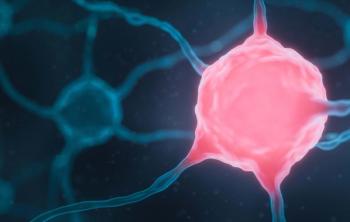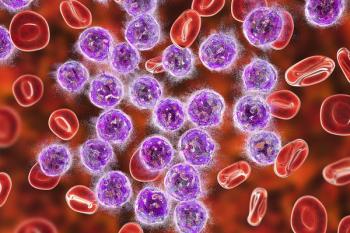
- ONCOLOGY Vol 16 No 3
- Volume 16
- Issue 3
Hematopoietic Stem Cell Transplantation in Lymphoma Patients Receiving Prior Therapy With Tositumomab/Iodine-131 Tositumomab
Tositumomab/iodine-131 tositumomab (Bexxar) is a novel active agent against CD20-positive lymphoma. There is a paucity of data examining the tolerance and outcome of hematopoietic stem cell transplantation (HSCT) for relapse after tositumomab/iodine-131 tositumomab.
Tositumomab/iodine-131 tositumomab (Bexxar) is a novel active agent againstCD20-positive lymphoma. There is a paucity of data examining the tolerance andoutcome of hematopoietic stem cell transplantation (HSCT) for relapse aftertositumomab/iodine-131 tositumomab.
From July 1992 to June 2001, 12 patients relapsing after tositumomab/iodine-131tositumomab underwent HSCT; 2 of these 12 also had a diagnosis oftherapy-related myelodysplasia. There were nine men and three women, with amedian age of 55 years (range: 47-66 years). Patients received a median of 3(range: 2-6) prior chemotherapy regimens (exclusive of tositumomab/iodine-131tositumomab) before or after tositumomab/iodine-131 tositumomab. The mediannumber of chemotherapy regimens was 2 after tositumomab/iodine-131 tositumomaband prior to HSCT (range: 1-4). The median time from tositumomab/iodine-131tositumomab therapy to HSCT was 554 days (range: 77-2,893 days). Five patientshad low-grade, four transformed low-grade, and three intermediate-gradelymphoma.
Eight patients received a myeloablative conditioning regimen; four othersreceived a reduced-intensity regimen consisting of fludarabine (Fludara),busulfan (Myleran), tacrolimus (Prograf), mycophenolate mofetil (CellCept), and4 Gy of total lymphoid radiation. Five patients received autologous HSCT: threemarrow and two peripheral blood stem cells. Among seven allogeneic transplants,three received matched related peripheral blood stem cells and four receivedmatched unrelated marrow (n = 3) or peripheral blood (n = 1) stem cells.Allogeneic recipients received tacrolimus and methotrexate for graft-vs-hostdisease prophylaxis. Clinical outcome is summarized in the table below:
All patients except two who received reduced intensity had severe mucositis.Reversible veno-occlusive disease of the liver also developed in two patients.There was one death from graft-vs-host disease and no regimen-related mortality.Engraftment was prompt, with a median recovery of absolute neutrophil count to ³ 500/µL of 12 days (range: 11-18 days). Six patients relapsed, includingall five autologous and one allogeneic recipients. Four patients were alive withno evidence of disease (three matched unrelated donor and one matched relateddonor). The other three allogeneic recipients died from either graft-vs-hostdisease, relapse, or acetaminophen-induced hepatic necrosis.
CONCLUSION: These data demonstrate the feasibility of allogeneic orautologous HSCT in heavily pretreated lymphoma patients who also receivedtositumomab/iodine-131 tositumomab.
Articles in this issue
almost 24 years ago
Single-Agent Rituximab in Early-Stage Chronic Lymphocytic Leukemiaalmost 24 years ago
Recruitment for Trial of Adjuvant Trastuzumab Under Wayalmost 24 years ago
Rituximab in the Treatment of Acquired Factor VIII Inhibitorsalmost 24 years ago
Support for New Medicare Pay Formulaalmost 24 years ago
Irinotecan-Containing Regimen Improves Survival in Small-Cell Lung CancerNewsletter
Stay up to date on recent advances in the multidisciplinary approach to cancer.





















































































